01dragonslayer
Ripped
- Jacked Cash
- 480,983
With an increasing range of fancy workout machines crowding gym floors, it’s easy to assume that there are more mass building options than ever.
Workout machines, various cables, and gimmicky training devices can be fun to use.
However, nothing beats gutting it out under the unforgiving weight of a heavily-loaded squat bar. So, let’s set the record straight.
No machine or elaborate exercise will ever be as effective as a basic multi-joint mass builder.
I’ve seen many ditch traditional movements in favor of machines. Muscle is often the first casualty. Don’t get lured into this trap.
As the fitness industry continues to expand, it’s unlikely that any new exercises will ever take the place of the best go-to size building movements.
Now, let’s check out the best of these movements, ranked in order of effectiveness.
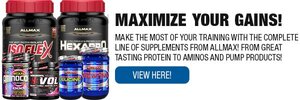
Do not roll the shoulders backwards or forwards when shrugging. This can lead to shoulder injury and minimize the effectiveness of this movement. Finally, when performing the shrug keep the elbows perfectly straight, stand upright with a slight arch to the lower back, and keep the feet flat on the ground.
Use enough weight to get a good squeeze at the top. Too much weight will only lead to half reps and poor progress.
Related: 48 Different Ways To Do A Bicep Curl
Tipping the body backwards and forwards to produce momentum will only transfer muscle tension from the biceps to the back. Instead, lighten the load a little to better target the biceps. Finally, keep the elbows stationary and at the sides of the waist throughout. Swinging the elbows forward will place stress on the front delts while removing it from the biceps.
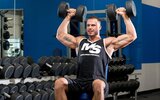
Though bar pressing allows more weight to be used, dumbbells require less involvement of the biceps and triceps. Therefore, the delts must work harder. The dumbbell press is the most effective of the delt builders as it engages all three delt heads. Also, it allows for a fuller range of motion compared to its bar counterpart and allows more weight to be lifted than isolation movements.
With head facing forward, the weights must be pressed vertically, then slowly lowered back to the starting position. No bouncing, jerking, or resting. Just fluid, controlled movement with no stopping in between.
The beauty of the bent over barbell row is the massive weights that can be hoisted with it. Further, the way the body is positioned during the lift calls more supporting muscles into play, thereby stabilizing the body so that maximum tension can be placed on the target muscles.
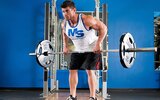
The set up is important, so ensure a solid grip on the bar, bend at the knees, and lock the hips and glutes into place to ensure greater stability. Provided the back remains slightly arched (not rounded), the barbell is to be pulled on an 80-90 degree angle thus ensuring the target muscles work extra hard to defeat gravity. The result is guaranteed growth and an incredible V-taper.
This comes in handy when adding weight to other mass builders such as the incline dumbbell press and triceps kickback. The close grip bench also puts less stress on the elbow and shoulder joints so more weight can be handled without risking injury.
Related: Tricep Trifecta - 3 Power Exercises For Tricep & Bench Strength
It’s best to perform the close grip bench earlier in the workout, when the triceps are freshest and safety is easier to monitor. For the best results, slowly lower the bar to the lower pecs while keeping elbows pinned to the sides of the waist. Keep elbows in as the bar is pressed and triceps are contracted.
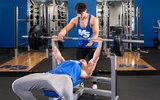
A technically demanding exercise, the bench press requires the perfect setup before liftoff (pull the shoulders back, maintain a slight back arch, and press feet into the floor). Keep the whole body tight from the first rep to the last.
When pushing the weight, ensure proper traction by driving the feet into the floor without raising the hips. To provide optimal support and full pec recruitment, press the bar from the lower pecs to just below the front delts (slightly backward).
Related: 10 Killer Pull Up Variations to Grow Huge Lats
The best lat movement of them all is the weighted chin-up. In fact, it could be argued that without chins, there is only so much back mass a lifter can hope to build. While the chin up does recruit a little more biceps than the pull-up, the lats can be more forcefully targeted due to a greater contraction.
Always keep the lower back arched during this movement. A rounded back can lead to potential injury and significantly reduces range of motion and lat stimulation. Maintain a grip slightly wider than shoulder width and keep wrists straight at all times. Once 12 reps can be achieved with ease, add weight.
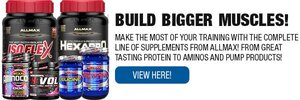
In comparison to the bench press, the dip is widely regarded as a superior pec builder as it does not place as much stress on the front delts; whereas the bench works up to 50 percent front delts.
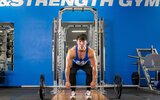
During liftoff, push with the feet until the bar is above the knees. Then pull the elbows behind the body as the legs are straightened. Do not shrug the weight. Keep chest up and out, and keep tension on the back at all times.
The complete development of the legs, in particular, is what the squat is famous for and no self-respecting bodybuilding champion should forgo this unparalleled mass builder.
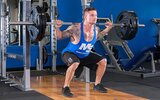
Before even thinking about loading up the bar, ensure that many weeks are spent addressing technical considerations. Specifically train for a full descent on each rep. When lowering the weight, feel the muscles contracting as you would when squeezing the quads on the upward phase. Achieve a solid quad stretch at the bottom before stopping just short of lockout at the top of the movement.
Workout machines, various cables, and gimmicky training devices can be fun to use.
However, nothing beats gutting it out under the unforgiving weight of a heavily-loaded squat bar. So, let’s set the record straight.
No machine or elaborate exercise will ever be as effective as a basic multi-joint mass builder.
I’ve seen many ditch traditional movements in favor of machines. Muscle is often the first casualty. Don’t get lured into this trap.
As the fitness industry continues to expand, it’s unlikely that any new exercises will ever take the place of the best go-to size building movements.
Now, let’s check out the best of these movements, ranked in order of effectiveness.
Movement 10: Dumbbell Shrugs
Dumbbell shrugs are essential for fleshing out the entire trap area, that thick blanket of muscle (often referred to as a yoke) which covers much of the back, from the base of the neck to the mid-back region. Big traps add an element of power to your physique. Gripping a heavy set of dumbbells also targets the forearm flexors and extensors, helping build a stubborn area for many.
Key Tips
To perfect the shrug, it’s important to maintain continuous tension on the traps. Feel them contracting from start to finish. Avoid dropping the dumbbells back into position. Instead, emphasize the negative by focusing on time under tension (TUT) on the way down. Then, immediately return to a full squeeze on the positive contraction. One second up and three seconds down will do the trick.Do not roll the shoulders backwards or forwards when shrugging. This can lead to shoulder injury and minimize the effectiveness of this movement. Finally, when performing the shrug keep the elbows perfectly straight, stand upright with a slight arch to the lower back, and keep the feet flat on the ground.
Use enough weight to get a good squeeze at the top. Too much weight will only lead to half reps and poor progress.
Movement 9: Barbell Curls
Biceps movements are many and varied. Nothing tops the standard barbell curl for adding meat to the long and short bicep heads (as well as the forearms and brachialis). An Arnold favorite, the barbell curl is an essential mass builder. Maximum weights can be used and less cheating is possible compared to standing dumbbell versions.Related: 48 Different Ways To Do A Bicep Curl
Key Tips
Be sure to do full range reps with shoulders and elbows at the sides of the body and wrists kept straight. This will better isolate the biceps to allow more muscle growth. Aim to pull the weight from the bottom position with the biceps while avoiding the assistance of supporting muscles (notably, the lower back).Tipping the body backwards and forwards to produce momentum will only transfer muscle tension from the biceps to the back. Instead, lighten the load a little to better target the biceps. Finally, keep the elbows stationary and at the sides of the waist throughout. Swinging the elbows forward will place stress on the front delts while removing it from the biceps.
Movement 8: Seated Dumbbell Presses
While isolation movements (front, side, and rear laterals specifically) are essential for delt refinement, detail, and size, the seated dumbbell shoulder press remains king of the mass building movements for delts.
Though bar pressing allows more weight to be used, dumbbells require less involvement of the biceps and triceps. Therefore, the delts must work harder. The dumbbell press is the most effective of the delt builders as it engages all three delt heads. Also, it allows for a fuller range of motion compared to its bar counterpart and allows more weight to be lifted than isolation movements.
Key Tips
To get the most from this movement, sit against a padded surface. This provides greater stability when hoisting the dumbbells, allowing more tension to be placed on the entire delt region. Ideally, the seated dumbbell press should be the third or fourth shoulder exercise in your routine. Pre exhaust and prepare the shoulders with isolation movements, then hit them with the big mass builders.With head facing forward, the weights must be pressed vertically, then slowly lowered back to the starting position. No bouncing, jerking, or resting. Just fluid, controlled movement with no stopping in between.
Movement 7: Bent Over Barbell Rows
Phenomenal back development is a hallmark of the complete physique. Ultra wide lats, spinal erectors resembling boa constrictors, and top to bottom thickness is what distinguishes the greatest bodybuilders of all time. And a great many of these champions prized the bent over barbell row as a second-to-none mass builder.The beauty of the bent over barbell row is the massive weights that can be hoisted with it. Further, the way the body is positioned during the lift calls more supporting muscles into play, thereby stabilizing the body so that maximum tension can be placed on the target muscles.

Key Tips
Completed with a shoulder width (under or overhand) grip, the bent barbell row is unparalleled for building canyon like thickness and detail through the entire back region. However, because it allows heavy weights to be shifted, this movement can also place undue stress on the lower spine if incorrectly performed.The set up is important, so ensure a solid grip on the bar, bend at the knees, and lock the hips and glutes into place to ensure greater stability. Provided the back remains slightly arched (not rounded), the barbell is to be pulled on an 80-90 degree angle thus ensuring the target muscles work extra hard to defeat gravity. The result is guaranteed growth and an incredible V-taper.
Movement 6: Close-Grip Bench Presses
An overlooked upper body mass builder, the close-grip bench press develops thickness that would be difficult to build purely with isolation movements. This movement encourages maximum overload of the chest (primarily the hard-to-reach inner pecs) and triceps (all three heads), while building pressing and elbow extension strength.This comes in handy when adding weight to other mass builders such as the incline dumbbell press and triceps kickback. The close grip bench also puts less stress on the elbow and shoulder joints so more weight can be handled without risking injury.
Related: Tricep Trifecta - 3 Power Exercises For Tricep & Bench Strength
Key Tips
To correctly and safely perform this movement, keep hand spacing slightly narrower than shoulder width. There is no need to adopt a very close grip (hands less than six inches apart). In fact, go too narrow and more stress is placed on the wrists and elbows.It’s best to perform the close grip bench earlier in the workout, when the triceps are freshest and safety is easier to monitor. For the best results, slowly lower the bar to the lower pecs while keeping elbows pinned to the sides of the waist. Keep elbows in as the bar is pressed and triceps are contracted.
Movement 5: Bench Presses
Often overrated, the bench press is nevertheless a key mass builder for the pecs, shoulders, and triceps. A great test of upper body strength, the bench thickens the upper body. Many call it the upper body squat, because it works so many different muscle groups.
Key Tips
To reap maximum results, keep wrists straight and slowly lower the bar all the way down until the thumbs touch the outer pecs. Then explode the bar to the starting position in a controlled fashion. Keep continuous tension on the pecs by not pausing at any point.A technically demanding exercise, the bench press requires the perfect setup before liftoff (pull the shoulders back, maintain a slight back arch, and press feet into the floor). Keep the whole body tight from the first rep to the last.
When pushing the weight, ensure proper traction by driving the feet into the floor without raising the hips. To provide optimal support and full pec recruitment, press the bar from the lower pecs to just below the front delts (slightly backward).
Movement 4: Chin Ups
Wide lats are a sure sign of an aesthetic and powerful physique. Though the shoulders can be too big for the pecs, the thighs to big for the calves and the biceps too big for the triceps, no bodybuilder was ever critiqued for having lats that were too wide. For thick-waisted people, wide lats also create the illusion of a smaller midsection.Related: 10 Killer Pull Up Variations to Grow Huge Lats
The best lat movement of them all is the weighted chin-up. In fact, it could be argued that without chins, there is only so much back mass a lifter can hope to build. While the chin up does recruit a little more biceps than the pull-up, the lats can be more forcefully targeted due to a greater contraction.
Key Tips
Start with a deep stretch before carefully shifting to the pulling motion (no jerking unless a torn lat is among your list of goals). Using back strength to hoist the body skyward, ensure the upper chest touches the bar.Always keep the lower back arched during this movement. A rounded back can lead to potential injury and significantly reduces range of motion and lat stimulation. Maintain a grip slightly wider than shoulder width and keep wrists straight at all times. Once 12 reps can be achieved with ease, add weight.

Movement 3: Weighted Dips
Among the best of the upper body movements, the weighted dip forces all the major upper body muscles to work through a vertical plane. It also emphasises the entire chest region, including the difficult to target lower part, and the entire triceps area.In comparison to the bench press, the dip is widely regarded as a superior pec builder as it does not place as much stress on the front delts; whereas the bench works up to 50 percent front delts.
Key Tips
To gain maximum benefit, keep the elbows in, chest out, and achieve a deep stretch on the way down. Bend the knees ensuring the feet are behind the body. Slowly lower into a full stretch. Once shoulders are level with the elbows, return to a full contraction, squeezing the pecs and triceps hard. Once 12 reps can be achieved with ease, add resistance.Movement 2: Deadlifts
Using more muscles than any other movement, the deadlift stimulates growth through the entire body. Because serious weights can be shifted from extension to contraction, combined with the stabilization needed to keep the body in the correct alignment, the recruited muscles are targeted to the greatest extent.
Key Tips
To properly target the back muscles, push the hips and glutes back rather than bending into the deadlift. Called the hip hinge, this motion requires the hips to be a little higher than when squatting into the movement. To avoid compression and sheer loading of the spine, never round the back when deadlifting. Instead, maintain a slight arch and keep the head facing forward (not up or facing down).During liftoff, push with the feet until the bar is above the knees. Then pull the elbows behind the body as the legs are straightened. Do not shrug the weight. Keep chest up and out, and keep tension on the back at all times.
Movement 1: Squats
Are you serious about building a thick cloak of muscle? Well the barbell squat must become one of your go to lifts. Traditionally regarded as a lower body mass builder, the squat works the whole physique from top to bottom. To squat correctly requires phenomenal core strength. To complete a set of full range reps, the entire body must provide optimal support.The complete development of the legs, in particular, is what the squat is famous for and no self-respecting bodybuilding champion should forgo this unparalleled mass builder.
Key Tips
While other mass builders require in the neighborhood of 8-12 reps for maximum growth, squats should go a little higher with 15-20 reps. Packed with a combination of fast and slow twitch fibers, the legs respond best to high reps and heavy weights. Go low. To half squat is to expect half the results.
Before even thinking about loading up the bar, ensure that many weeks are spent addressing technical considerations. Specifically train for a full descent on each rep. When lowering the weight, feel the muscles contracting as you would when squeezing the quads on the upward phase. Achieve a solid quad stretch at the bottom before stopping just short of lockout at the top of the movement.

